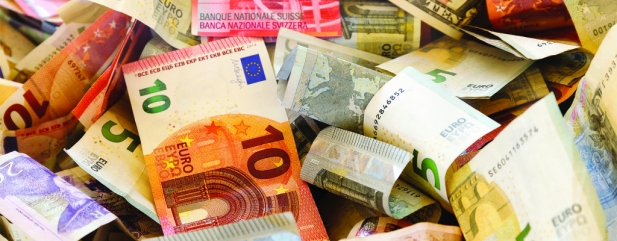Archived article
Please note that tax, investment, pension and ISA rules can change and the information and any views contained in this article may now be inaccurate.
Beginner’s guide to forex

Trading the world’s currency markets was once the exclusive preserve of international banks and hedge funds. All that has changed over the past 20 years and now it is very straightforward for you to speculate on the direction of the likes of the pound, euro or yen.
Forex trading can still be a daunting prospect for those undertaking it for their first time as it is full of unfamiliar jargon and terminology. To help you, we now talk through the first steps you need to take to being a successful currencies trader.
STEP ONE: Understand 'pairs'
Currencies trade in pairs. If we hear talk of one currency being strong or weak, it is not happening in isolation. It will be rising or falling when compared to another country’s currency.
So when trading, for example, the pound/US dollar exchange rate (GBP/USD) you are taking a view on whether the pound will strengthen or weaken against the dollar over your particular time frame.
STEP TWO: How it works
We can look at events in the summer of 2016 to illustrate this idea. After the UK voted to leave the European Union the pound fell heavily against many world currencies. The GBP/USD rate had been 1.5000 on the day of the vote.
When the result came in, the currency pair ended the day at 1.3700. The day before, the pound had bought one dollar and 50 cents – but now it was only worth one dollar and 37 cents.
That is a sizeable drop and a very extreme move by historical standards but it does demonstrate how the value of one currency is measured against its counterpart from another country.
STEP THREE: Understand the main pairs
Traders will try and take advantage of movements in exchange rates by trading forex pairs.
In theory, any currency can be traded against another – but most traders will tend to stick to what is known as the major currency pairs.
These would typically include the pound/US dollar (GBP/USD), euro/US dollar (EUR/USD), US dollar/Japanese yen (USD/JPY), US dollar/Swiss franc (USD/CHF) and Australian dollar/US dollar (AUD/USD).
What may be surprising to those from a traditional share investing background is that currencies can be traded in both directions.
It is just as easy to sell short and try to profit from a fall as it is to buy if you think an exchange rate will increase.
STEP FOUR: Understand the costs
The cost of doing business in the forex markets is relatively low compared to other markets.
The bid/offer spread (the price you sell at/the price you buy at) is usually very narrow, and there is typically no extra commission to pay.
This situation, coupled with the day to day volatility – the swings in the market – has made forex an incredibly popular market with short-term traders.
STEP FIVE: How to access the markets
There are various ways that a private investor can access the forex market.
In the UK, spread betting is a very popular approach but there are also dedicated brokers who will let you trade contracts on the world’s forex pairs.
STEP SIX: Understand the term 'point'
It is important to understand what a one point movement means when trading forex and the value of that move.
For example, if the GBP/USD exchange rate moves from 1.2700 to 1.2800 that doesn’t sound that significant as it only means the pound buys an extra US cent. But in forex trading terms, that is a move of 100 points.
Even on quiet days, many forex pairs will move at least 50 points and this adds to the appeal of this global market.
STEP SEVEN: Understand the risks
If someone thought the GBP/USD rate was going to rise, they may decide to try and profit from this by spread betting and buying ‘£1 per point’.
Alternatively they might use a forex broker and buy a contract where each one point move in the currency is worth £1 – it is important to know the size of contract you are trading so you are fully aware of the risk.
In both examples, for every point (or ‘pip’, to use some forex terminology) the exchange rate moves in their favour, they would make £1 profit.
Our trader may buy GBP/USD at 1.2700 and see the price rise to 1.2750 to sell. The market has moved 50 points in their favour so the trade could be closed in this example for £50 profit.
Markets can move very quickly against you as well and this is particularly true in the often volatile world of forex.
New traders should start small to get a feel for how these markets move and use appropriate risk management tools such as stop losses.
Important information:
These articles are provided by Shares magazine which is published by AJ Bell Media, a part of AJ Bell. Shares is not written by AJ Bell.
Shares is provided for your general information and use and is not a personal recommendation to invest. It is not intended to be relied upon by you in making or not making any investment decisions. The investments referred to in these articles will not be suitable for all investors. If in doubt please seek appropriate independent financial advice.
Investors acting on the information in these articles do so at their own risk and AJ Bell Media and its staff do not accept liability for losses suffered by investors as a result of their investment decisions.
 magazine
magazine








